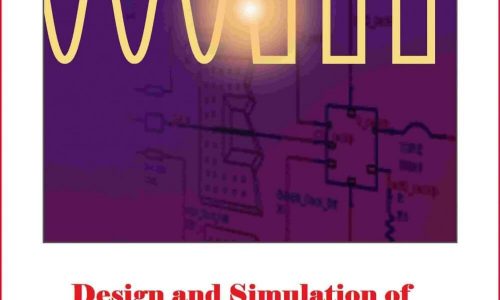The above course is taught on campus in groups and now it is being provided online as well for individuals. Rahsoft provides these courses online through Udemy as well as its own website and it counts toward RF Certificate provided through Rahsoft.
In RAHRF201 you would get deeper into Radio Frequency Design Theory and Principles. The reference book for this course is RF Microelectronics of Behzad Razavi .
At the end of this course the student will have depth knowledge of Radio Frequency principles. The team’s main goal while developing the course has been to concentrate more on the concepts in order for students to understand the topics rather than simply providing formulas.
This course has helped Engineers on surviving complicated phone and onsite interviews of Fortune 500 RF Companies and gain salaries on their early careers from 70K~120K. This course is also helpful for Engineers in the industry or technicians which want to change gears towards Radio Frequency.
What are the requirements?
- RAHRF101
- Electrical and Electronics Engineering Basics (Bachelor’s level circuit and system analysis)
- You should be familiar with basic level Fourier transform, frequency spectrum and circuit analysis.
What am I going to get from this course?
- Power in AC circuits (Detailed explanation including average power, complex power, maximum power transfer and power in matched RF systems.
- A brief review of MOS transistor (DC and AC analysis)
- Nonlinearity in RF systems (Everything you need to know about non-linearity is explained in details including numerical examples.)
- Noise including device noise, Noise PSD, Input referred noise and Noise Figure
- Sensitivity and Dynamic range in RF systems
- RLC passive circuits
What is the target audience?
- Electrical Engineers
- RF Engineers
- Communication Engineers
- IoT Engineers
- Hardware Engineers
- Sales and Application Engineers
- Semiconductor Employees
- Engineers and Technicians seeking jobs in the RF Field
CERTIFICATION
Upon completion of the course the students would be provided a certification of completion . Please note this course is eligible towards Rahsoft Radio Frequency Certificate.
LEARNING OUTCOMES
- Over 56 lectures and 8.5 hours of content!
- Instructor support and office hours.
- Information packed practical training starting from basics to advanced testing techniques.
- Best suitable for beginners to advanced level users and who learn faster when demonstrated.
- Course content designed by considering current Radio Frequency Engineering technology and the job market.
- Practical quizzes at the end of every session.
Curriculum For This Course
Section 2: Power Have a complete understanding of power in Radio Frequency
Lecture 3: Instantaneous and average power
Lecture 4: Power Example 1
Lecture 5: power and phasor
Lecture 6: Power Example 2
Lecture 7: Complex power
Lecture 8: Complex Power Summary
Lecture 9: Power Example 3
Lecture 10: Complex Power ADS simulation
Lecture 11: Maximum power
Lecture 12: Max power ADS simulation
Lecture 13: Power and Matching(Preview enabled)
Lecture 14: Max Power and Matching Summary
Lecture 15: dB, dBm and power gain
Section 3: Mos Transistor
Lecture 16: MOS Transistor structure and DC characteristics
Lecture 17: Small signal
Lecture 18: Small signal model
Lecture 19: Parasitic cap and fT
Lecture 20: ADS FT
Lecture 21: MOS Example 1
Section 4: Non Linearity
Lecture 22: Intro
Lecture 23: Harmonic distortion
Lecture 24: Gain Compression
Lecture 25: Gain Compression ADS example
Lecture 26: Harmonic Distortion and Gain Compression Summary
Lecture 27: Desensitization(Preview enabled)
Lecture 28: Desensitization Example
Lecture 29: Intermodulation
Lecture 30: Intermodulation IIP3
Lecture 31: Intermodulation Example 1
Lecture 32: Intermodulation Example 2
Lecture 33: Intermodulation Example 3
Lecture 34: Cascaded Stages
Section 5 : Noise
Lecture 35: Intro
Lecture 36: Device Noise
Lecture 37: Input Referred Noise
Lecture 38: Input Referred Noise Example
Lecture 39: Noise Figure (NF) First Part(Preview enabled)
Lecture 40: Noise Figure (NF) Second Part
Lecture 41: Noise Figure (NF) Example 1
Lecture 42: Noise Figure (NF) Example 2
Lecture 43: Noise in Cascaded stages
Lecture 44: Noise in Cascaded stages Example
Lecture 45: Noise in Passive Reciprocal Circuits
Lecture 46: Noise in Passive Reciprocal Circuits Example
Section 6 : Sensitivity and Dynamic Range
Lecture 47: Sesitivity(Preview enabled)
Lecture 48: Sensitivity Example
Lecture 49: Dynamic Range
Lecture 50: Dynamic Range Example
Section 7: RLC circuit
Lecture 51: RLC resonance Circuits
Lecture 52: Bandwidth and Quality Factor
Lecture 53: RLC ADS simulation
Lecture 54: Two component networks
Lecture 55: Low Quality Factor Example
Lecture 56: Matching Circuit
Topics RF course online RF training courses online RF certification course online radio frequency engineering training courses
Radio Frequency Certificate Courses Available and Prerequisites
Course Features
- Lectures 65
- Quizzes 27
- Duration 8.5 hours
- Skill level All levels
- Language English
- Students 1419
- Certificate Yes
- Assessments Yes







